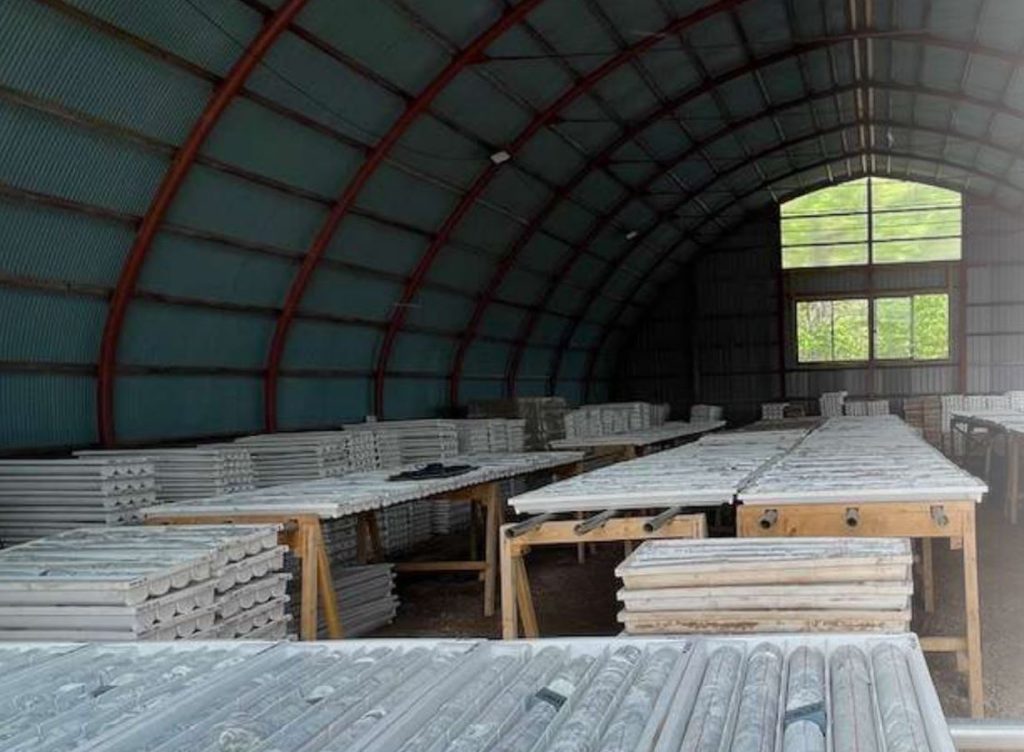Japan Gold drills 1.8 g/t gold over 0.5 metres at Ikutahara, Japan

Japan Gold Corp. [JG-TSXV; JGLDF-OTCQB] reported additional results from work programs completed in the fourth quarter of 2022 over the Ryuo prospect within its Ikutahara project, northern Hokkaido, Japan.
Work programs included two drill holes completed in December, mapping of prospect extensions, and completion of an extensive soil geochemical survey covering 1,300 hectares over the prospect area and potential mineralized extensions. The Ryuo prospect is one of several prospects being advanced within the company’s 100%-owned Ikutahara Project.
Analytical results from the recently completed soil survey at Ryuo have identified three significant new gold and pathfinder element anomalies up to 1 km in length, which remain open ended, and may represent shallowly concealed mineralization below late-mineral cover.
The completion of the soil grid was the next stage in expanding the prospect and developing a pipeline of new targets for advancement to drilling during 2023.Gravity defined structures, CSAMT, geological mapping and drill core have provided a structural foundation supporting the new soil results and will further support advancement and drill targeting of the newly defined anomalies.
The Ryuo Prospect consists of five areas of underground workings that were developed along a 1.2 km long, open ended trend of alteration and mineralization prior to the government-imposed closure in 1943. During 2021 and 2022, the company completed 20 drill holes. The recently completed soil survey has indicated the potential to significantly extend the mineralized corridor.
Two campaigns of soil sampling were completed over the Ryuo prospect and extensions between 2021 and 2022, with a total of 1,331 composite soil samples collected within a 4.5 by 3.5 km grid area.
The company completed 20 drill holes at the Ryuo prospect during 2021 and 2022 and has intersected significant mineralization, including from the Jinja vein, an interval which graded 6.3 g/t gold over a 20-metre length with an included interval of 5.1 metres at 15.2 g/t gold, (down-hole intervals). The completion of the soil grid is the next stage in expanding the prospect and developing a pipeline of new targets for advancement to drilling.
Two drill holes, IKDD22-017 and 018 comprising a total of 1,066.8 metres were completed in December 2022 to test two open-ended mineralized zones intersected during the previous drilling campaign completed earlier in 2022. Drilling completed earlier in 2022 had defined two open ended mineralized zones along the Shouei structure in drill holes IKD22-005 and IKDD22-007. IKDD22-005 intersected a 0.75-metre interval with 22.5 g/t gold within a broader 3-metre wide quartz vein interval approximately 50 metres along strike of the Shouei workings.
Drill hole IKDD22-007 failed to reach its target depth due to difficult drilling conditions, stopping in a mineralized faulted zone comprising crushed hydrothermal breccia with locally intense clay zones. Mineralized intervals in the bottom of drill hole IKDD22-007 included 0.4 metres of 12.8 g/t gold, including 0.2 metres of 23.7 g/t gold.
IKDD22-017, positioned on the same drill pad as IKDD22-007, drilled at a steeper angle to test for continuity of mineralization below IKDD22-007 and to see if the high-grade interval in IKDD21-008 (0.45 m grading 1,395 g/t gold) coalesced into a mineralized structure at depth. The drill hole intersected three significant fault zones comprising crushed rock and clay with zones of broken banded quartz vein fragments.
The most significant interval of mineralization occurred at a depth of 335.35 metres (0.2 m @ 1.0 g/t gold) which appears to correspond with the down-dip extension of the mineralized fault zone in the bottom hole IKDDD22-007.
Drill hole IKDD22-018 targeted the extension of the mineralized interval in IKDD22-005, (0.75 m @ 22.5 g/t gold), 100 metres southwest along strike and approximately 100 metres higher in elevation.
A mineralized vein within the silicified sediments reported the peak value within the drill hole of 0.5 metres of 1.8 g/t gold, including 0.15 metres of 4.5 g/t gold. As in IKDD22-017, post-mineral faulting appears to have affected the continuity of mineralization along the Shouei structure.
Important insights gained from the 20 drill holes completed at Ryuo to date include the identification of a high-grade gold events across the prospect, wide high-grade mineralized vein structures, and the intimate relationship of certain rhyolite phases with mineralization.
Once the winter snow has melted, ground checking of the 3 new soil anomalies will be prioritized to support expansion of the soil grids to cover open-ended anomalous zones. The timing of additional drilling at Ryuo will be pending on outcomes of structural interpretations and ranking of results against other programs that will be running in parallel during 2023 on the Kitano-o district and Saroma prospects.
Japan Gold is focused solely on gold exploration across the three largest islands of Japan: Hokkaido, Honshu, and Kyushu and holds a portfolio of 32 gold projects.
